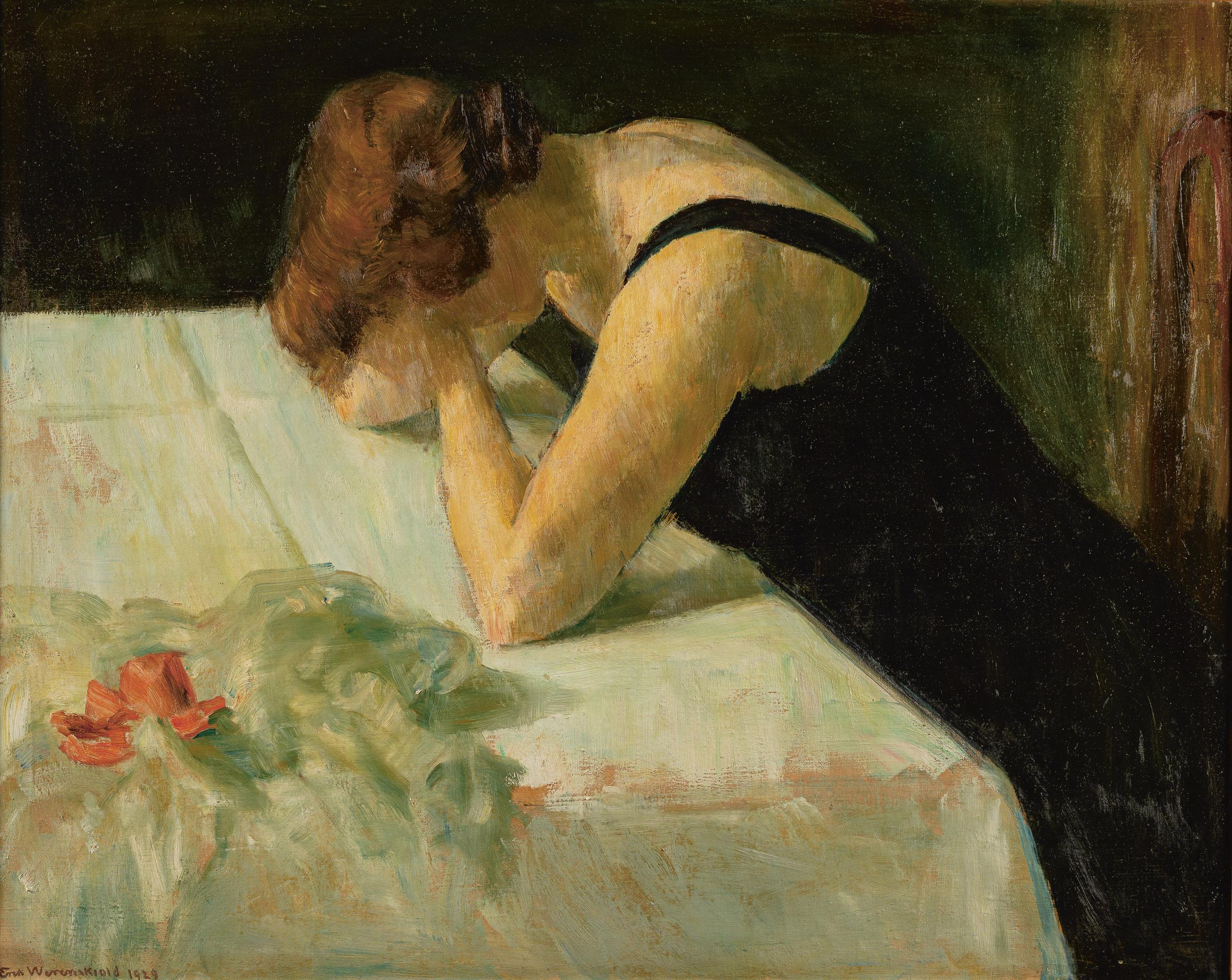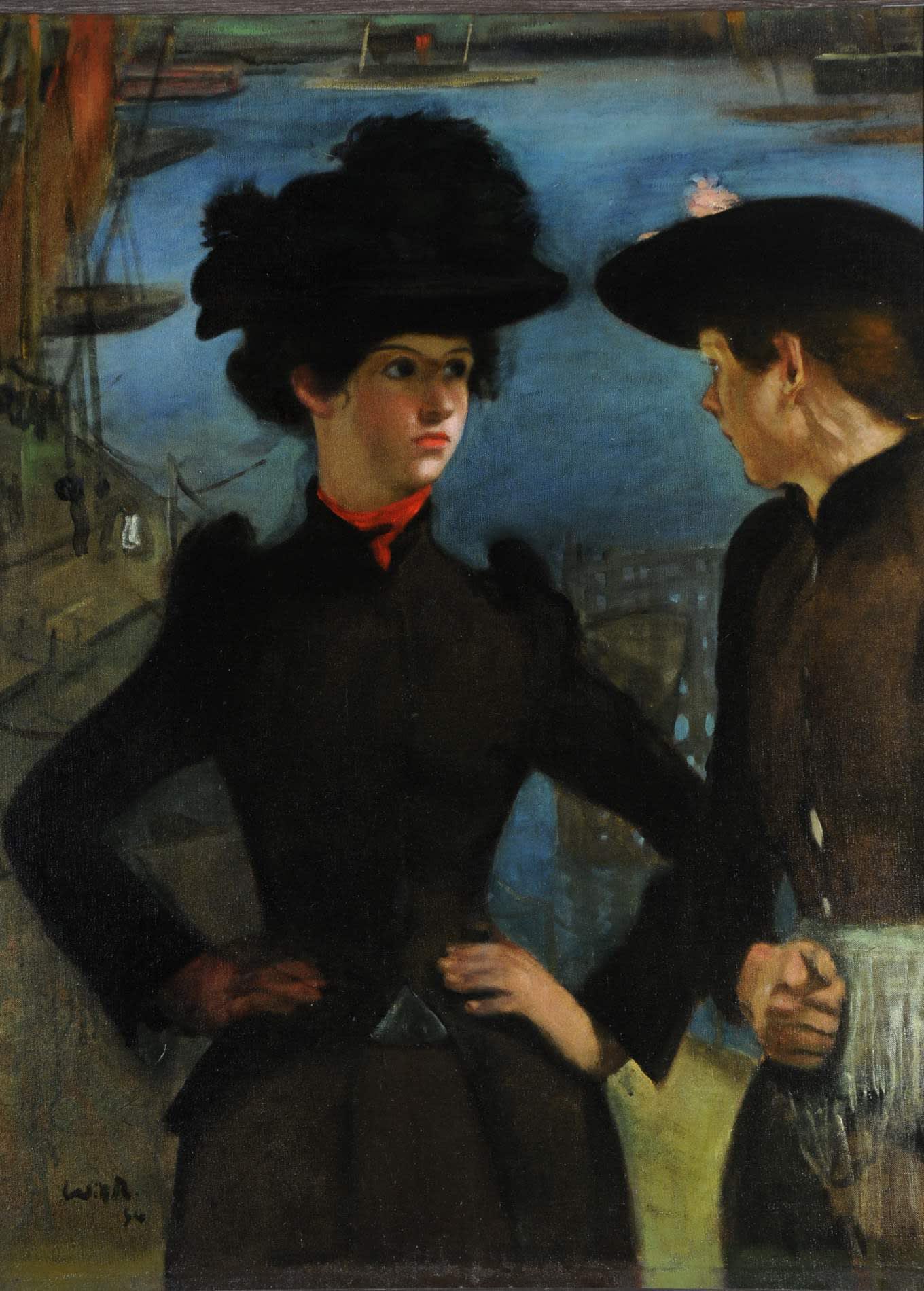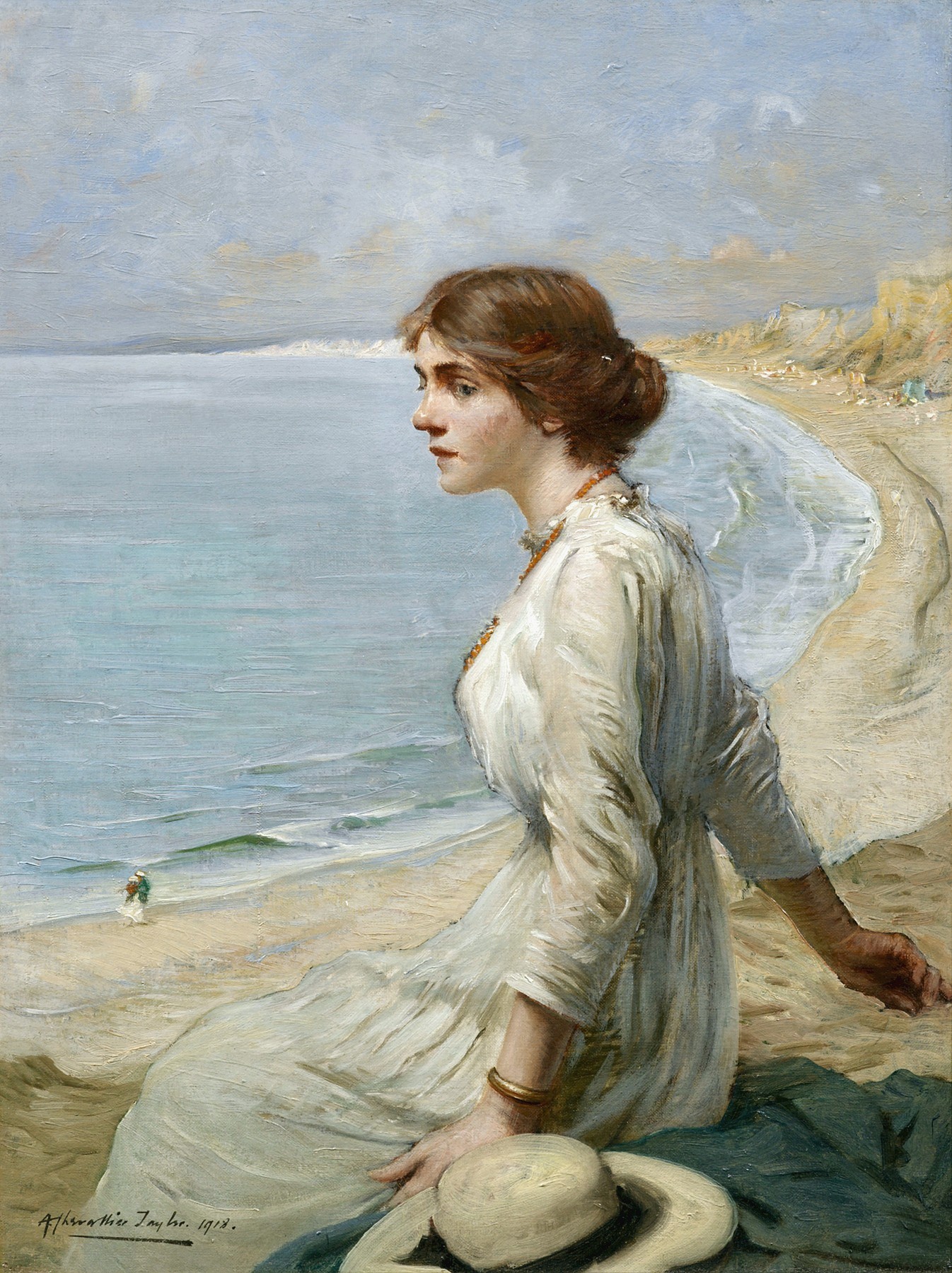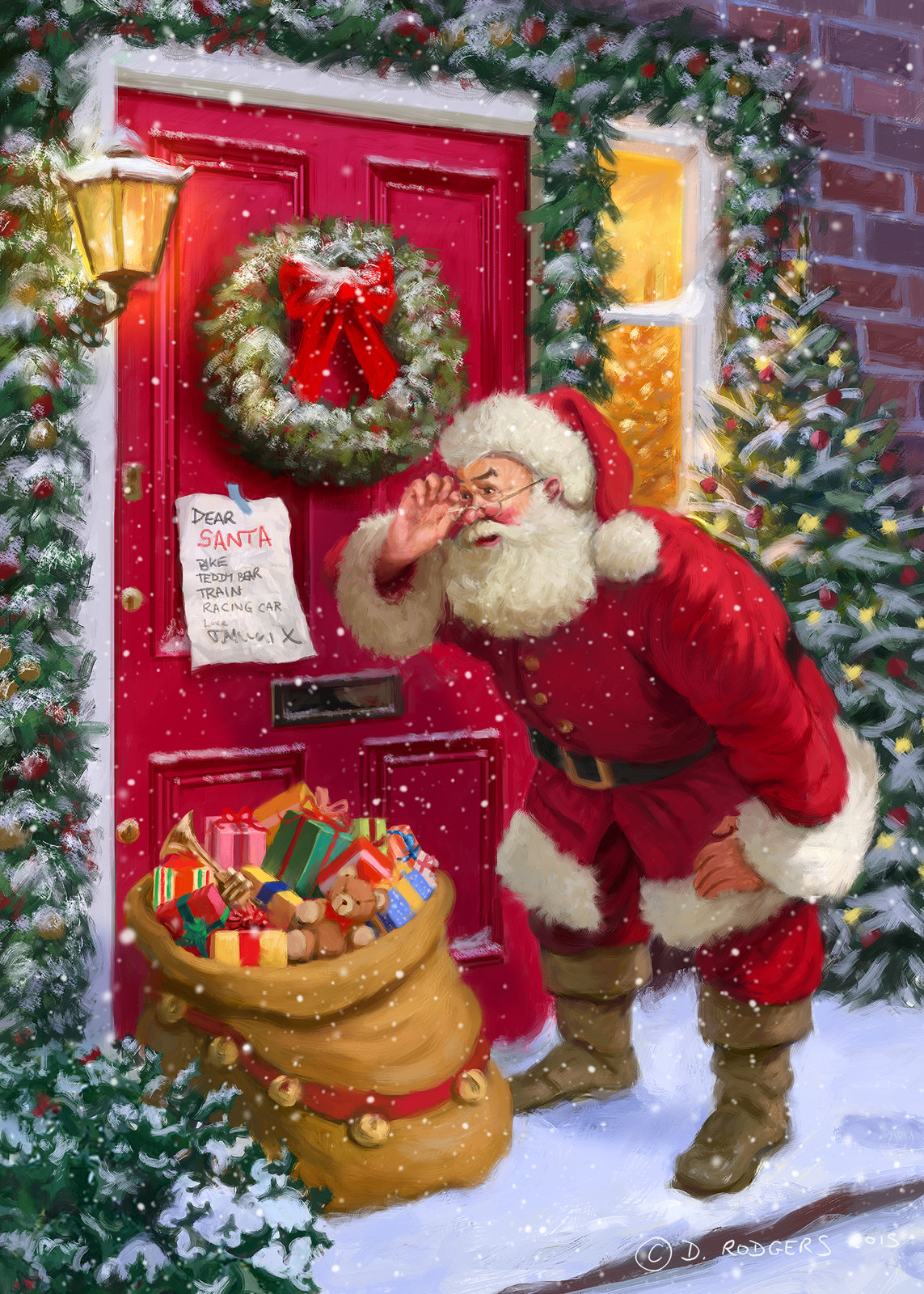Francis Montague Holl RA (London 4 July 1845 - 31 July 1888 London) was an British painter, specializing in somewhat sentimental paintings with a moment from a narrative situation, often drawing on the trends of social realism and the problem picture in Victorian painting.
He was also, especially in his later years when the demand for social realism slackened, a portrait painter, mostly of official-type portraits of distinguished and therefore elderly men, including members of the royal family.
He died in his early 40s, which some contemporaries attributed to overwork, as he had been very busy in the last twenty years of his life.




















